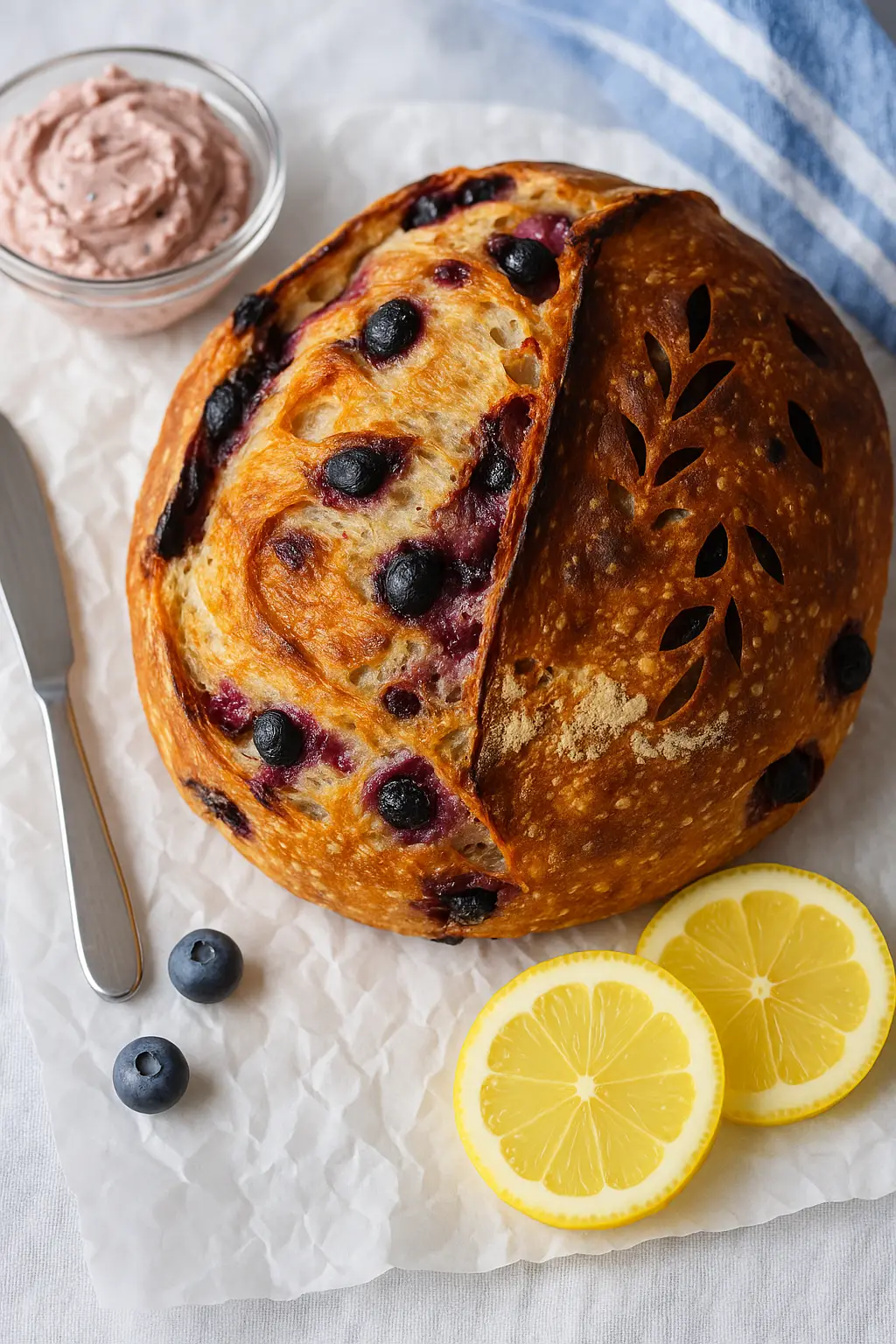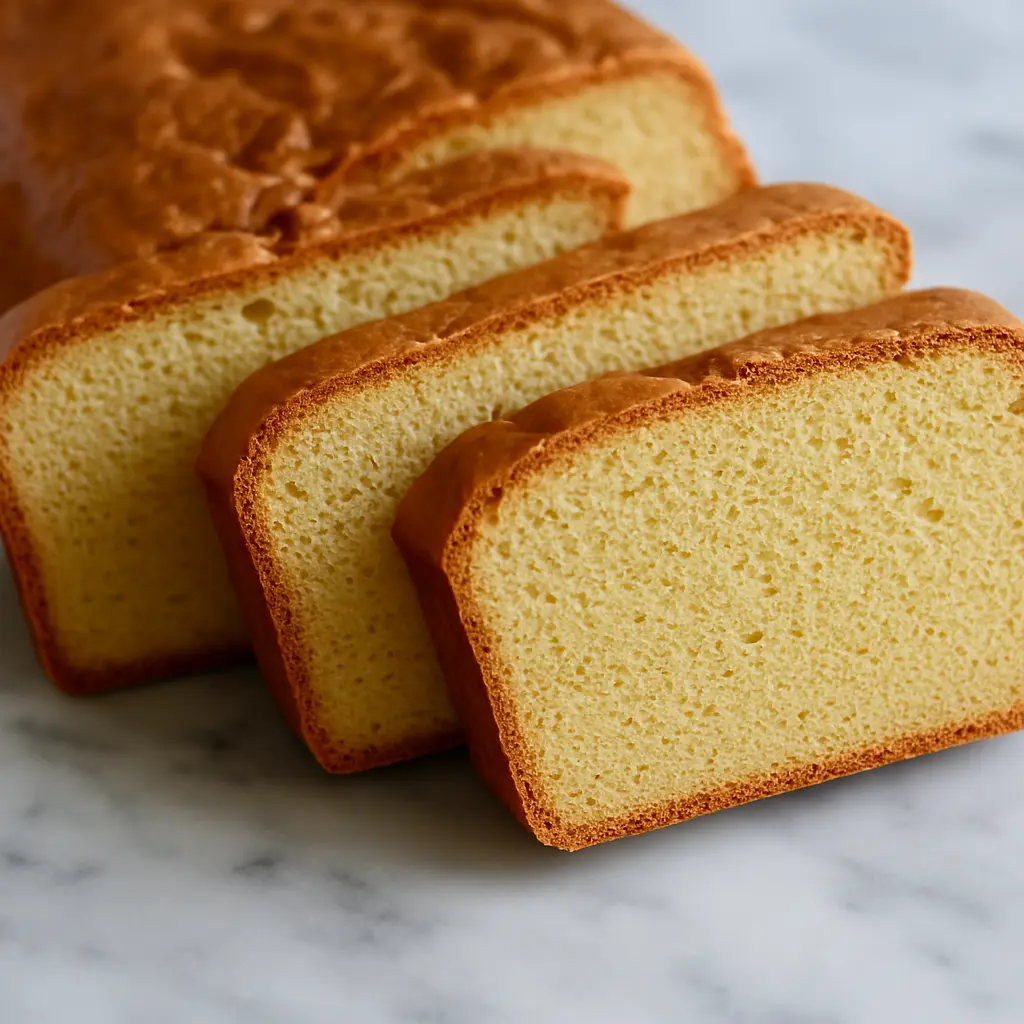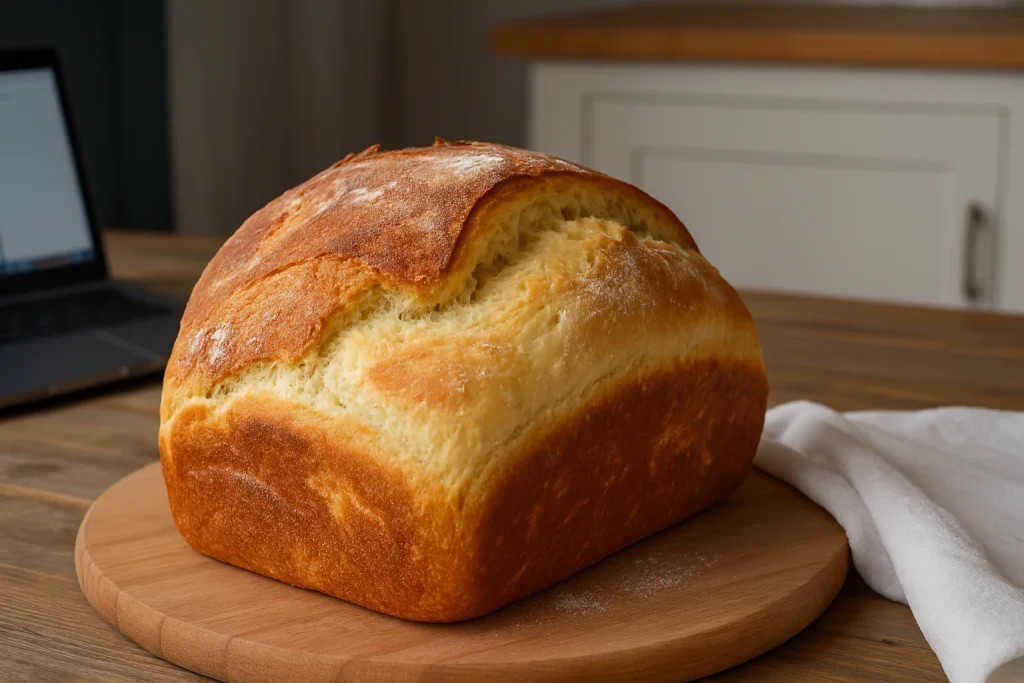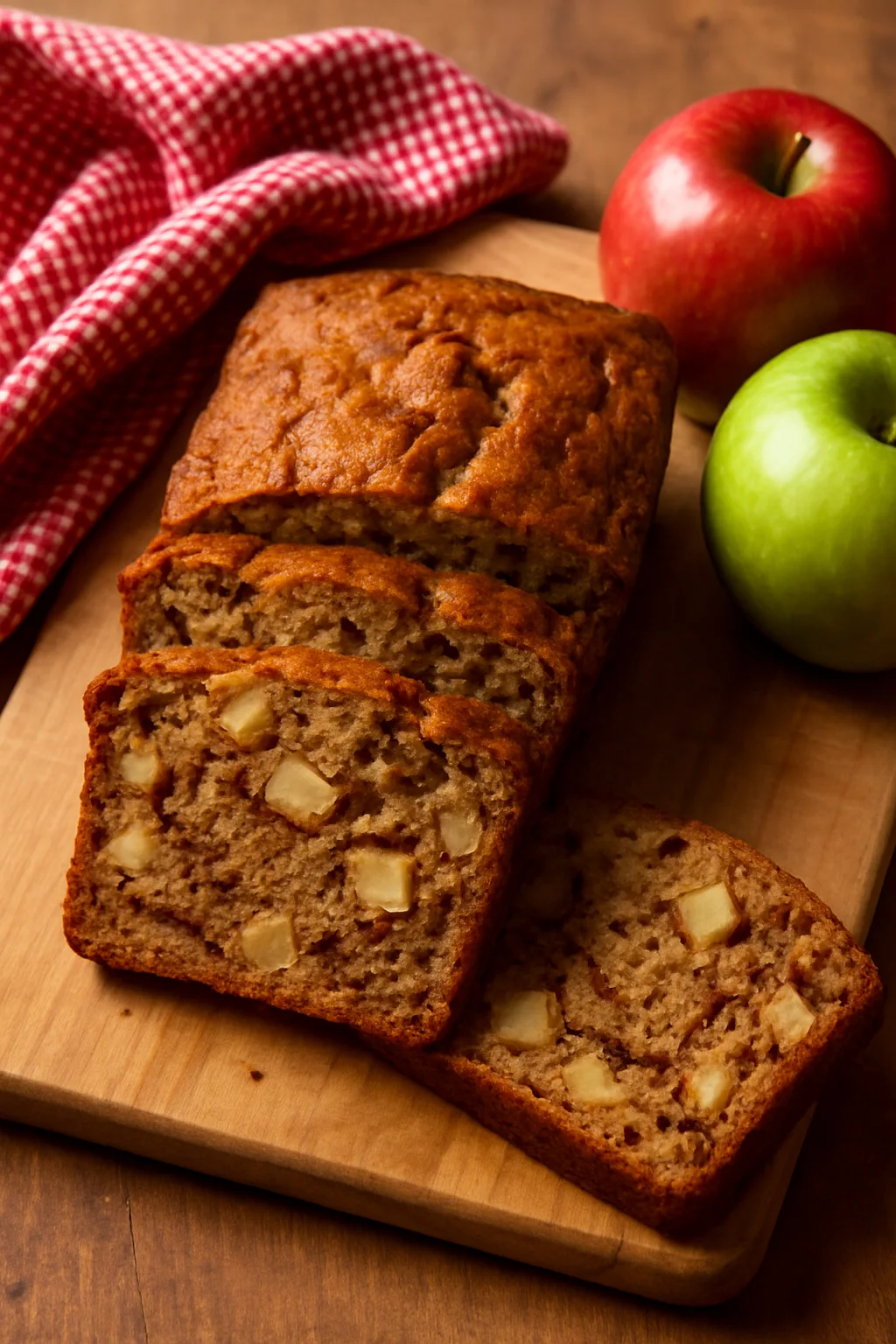Lemon Blueberry Cream Cheese Sourdough Bread
This lemon blueberry cream cheese sourdough recipe represents a beautiful marriage between ancient fermentation techniques and contemporary flavor profiles that will challenge your skills and reward your patience.
Make no mistake—this is an ambitious project. The delicate balance of managing proper fermentation while incorporating moisture-rich inclusions demands attention to detail and a solid understanding of sourdough fundamentals. But for the dedicated baker, the result is nothing short of magnificent: a complex crumb structure studded with purple-blue bursts of berry, subtle swirls of tangy cream cheese, and the aromatic presence of lemon zest throughout.
Why This Sourdough Challenge Is Worth Your Time
- Unique Flavor Complexity: The natural tang of sourdough harmonizes with lemon brightness, subtle berry sweetness, and rich cream cheese for an unparalleled taste experience
- Stunning Visual Appeal: A beautiful open crumb showcasing vibrant blueberries and delicate cream cheese marbling
- Technical Achievement: Successfully managing hydration and fermentation with moisture-rich inclusions
- Impressive Presentation: A showstopping loaf that demonstrates true artisan bread-making prowess
- Satisfaction Factor: The deep sense of accomplishment that comes from executing complex sourdough techniques with precision
The technical challenge here lies in maintaining optimal dough structure while incorporating ingredients that can potentially disrupt it. Blueberries release moisture during baking, cream cheese creates pockets of richness, and lemon zest contributes aromatic oils—all factors that must be carefully balanced against proper fermentation and gluten development. Master this recipe, and you’ll have elevated your sourdough craft to a truly artisanal level.

Lemon Blueberry Cream Cheese Sourdough Recipe Overview
Baking Time and Nutrition Facts
16 Slices
2 Hours
38 Hours
165 Kcal
5g
5g
2g
40 Hours
Lemon Blueberry Cream Cheese Sourdough Ingredients
Key Ingredients
- For the Levain Build:
25g mature sourdough starter (100% hydration) – 5%
50g bread flour – 10%
50g water – 10%
- For the Main Dough:
450g bread flour (12-14% protein) – 90%
50g whole wheat flour – 10%
340g water – 68% (Total hydration with levain water: 75%)
125g ripe levain (from above) – 25%
11g fine sea salt – 2.2%
- For the Inclusions:
120g full-fat cream cheese, cold from refrigerator – 24%
100g blueberries (fresh or frozen) – 20%
Zest of 2 medium lemons – approx. 1-2%
1 tablespoon fresh lemon juice – approx. 1%
2 tablespoons all-purpose flour (for coating blueberries) – 2.5%
Note: Baker’s percentages calculated with total flour weight (500g) as 100%.
Critical Ingredient Notes:
Sourdough Starter: Your starter should be at peak activity—bubbly, doubled in volume, and passing the float test. Use a starter maintained at 100% hydration (equal parts flour and water by weight) for consistent results.
Flour Selection: The blend of bread flour and whole wheat creates ideal structure and flavor complexity. The high protein bread flour (prefer 13%+) provides necessary strength to handle the inclusions without collapsing. The whole wheat adds subtle nuttiness and helps manage the dough’s water absorption.
Hydration Consideration: The base dough sits at 75% hydration before inclusions, which provides enough strength while remaining workable. We’ve deliberately kept hydration slightly lower than typical open-crumb sourdough to accommodate the moisture released by the blueberries during baking.
Cream Cheese Strategy: Full-fat block cream cheese works best; reduced-fat versions contain additives that can affect fermentation. We’ll be cutting it into small cubes (approximately 1cm) and freezing them solid before incorporation to maintain distinct pockets rather than having it fully integrated into the dough.
Blueberry Preparation: Both fresh and frozen work, though frozen berries are easier to fold in without crushing. They’ll be lightly coated with flour to help prevent excess moisture migration into the dough during fermentation.
Lemon Components: Zest provides aromatic oils that infuse the dough during fermentation and proofing. The small amount of juice adds brightness without significantly affecting hydration, though it does slightly increase acidity.
Salt: Never compromise on salt—it’s essential for controlling fermentation rate and developing flavor complexity. Fine sea salt distributes more evenly than coarse varieties.
How To Make Lemon Blueberry Cream Cheese Sourdough
Day 1: Building Your Levain
Instructions
- Prepare Levain: Combine 25g active starter with 50g bread flour and 50g water at 78-80°F (25-27°C) in a clean container. Mix thoroughly until no dry flour remains.
- Ferment: Cover loosely and let ferment at room temperature (75-78°F/24-26°C) for 10-12 hours, or until tripled in size with a domed surface showing bubbles of various sizes. The levain should smell pleasantly tangy with fruity notes.
Day 2: Main Dough Preparation (Morning)
Preparation Phase (1 hour before mixing)
Instructions
- Prepare Cream Cheese: Cut 120g cream cheese into small 1cm cubes and place on a parchment-lined plate. Freeze for at least 1 hour before incorporation.
- Prepare Blueberries: If using fresh, gently wash and thoroughly pat dry. If using frozen, keep frozen. Toss either type with 2 tablespoons of all-purpose flour just before adding to the dough.
- Prepare Lemon Components: Zest two lemons, being careful to avoid the bitter white pith. Set aside zest and 1 tablespoon of fresh juice.
Autolyse (30 minutes)
Instructions
- Mix Base Dough: In a large mixing bowl, combine 450g bread flour and 50g whole wheat flour with 320g of water (reserve 20g for later). Mix by hand until no dry flour remains. The texture will be shaggy.
- Rest: Cover and let rest for 30 minutes at room temperature. This initiates gluten development before adding the acidic components.
Initial Mix (15 minutes)
Instructions
- Add Levain: Add 125g ripe levain to the autolysed dough. Use wet hands to incorporate by pinching and folding the dough over itself repeatedly.
- Add Remaining Components: Sprinkle the salt evenly over the dough. Add the lemon zest and 1 tablespoon lemon juice. Add remaining 20g water. Work everything into the dough thoroughly using the pinching and folding technique until fully incorporated.
- Develop Dough: Perform a series of stretch and folds in the bowl for 3-5 minutes until the dough begins to show some elasticity and becomes smoother.
- Rest: Cover and rest for 30 minutes.
Bulk Fermentation (4-5 hours at 75-78°F/24-26°C)
Instructions
- First Stretch & Fold: Perform a full set of stretch and folds from all four sides of the dough, developing tension and strength. Cover and rest for 30 minutes.
- Second Stretch & Fold: Repeat the stretch and fold process. Cover and rest for 30 minutes.
- Third Stretch & Fold: Perform another set of stretch and folds. The dough should now be showing signs of increased elasticity and gas development. Cover and rest for 30 minutes.
- Lamination & Inclusion Incorporation: (This is the critical step!)
+ Prepare a clean, lightly misted work surface.
+ Gently turn out the dough and carefully stretch it into a large rectangular shape (approximately 18″ x 24″) without tearing, using wet hands as needed.
+ The dough should be thin enough to be slightly translucent but still intact.
+ Evenly distribute the frozen cream cheese cubes over 2/3 of the dough surface.
+ Sprinkle the floured blueberries over the same area.
+ Fold the empty 1/3 of dough over the middle third (covering half the inclusions).
+ Fold the opposite side over (like folding a letter), enclosing all inclusions.
+ Gently seal the edges by pressing them down.
+ Carefully transfer back to the bowl.
+ Cover and rest for 45 minutes. - Gentle Coaxing: Rather than aggressive stretch and folds, now use a gentler approach. Every 45 minutes, reach under the dough with wet hands and gently pull it up from the center and fold it over itself. This preserves the inclusion distribution while continuing to build strength.
- Observe Fermentation: Continue bulk fermentation until the dough has:
+ Increased in volume by approximately 50%
+ Developed a smoother, more rounded dome
+ Shows bubbles around the edges when viewed from the sides of the container
+ Has a jiggling, pillowy quality when the container is gently shaken
+ Feels airier and more alive to the touch
Critical Note: Temperature and environment will affect fermentation time. Watch the dough, not the clock. In cooler conditions (below 75°F/24°C), bulk fermentation may take 6+ hours.
Pre-shaping (15 minutes)
Instructions
- Turn Out Dough: Using a dough scraper, gently turn the dough onto a clean, lightly floured work surface with the smooth side down.
- Pre-shape: With floured hands, gently fold the edges toward the center to create tension on the outer surface, being careful not to compress the air pockets or rupture any berries. Form a round shape.
- Bench Rest: Let the dough rest, uncovered, for 15-20 minutes. The dough should relax slightly but not spread excessively.
Final Shaping (10 minutes)
Instructions
- Prepare Banneton: Dust a banneton basket (oval or round) generously with rice flour or a 50/50 mix of rice and wheat flour.
- Shape Dough:
+ For a batard (oval): Gently flip the dough over so the smooth side is down.
+ Fold the bottom third up, then fold each side toward the center.
+ Finally, roll the top third down toward you, creating tension by pulling it slightly as you roll.
+ For a boule (round): Flip the dough with smooth side down. Fold edges toward center, then flip so seam is down.
+ Cup hands around dough and rotate while creating tension on the surface by pulling dough toward you. - Transfer to Banneton: Place the shaped dough seam-side up in the prepared banneton.
Cold Proof (12-16 hours)
Instructions
- Cover Dough: Place the banneton in a large plastic bag or cover with a damp cloth.
- Refrigerate: Proof in refrigerator (38-40°F/3-4°C) for 12-16 hours. This slow, cold fermentation develops flavor complexity and makes the dough easier to score and handle.
Day 3: Baking Day
Preparation (45 minutes before baking)
Instructions
- Preheat Oven: Place Dutch oven with lid inside and preheat to 500°F (260°C) for at least 45 minutes.
- Prepare Dough: Remove dough from refrigerator. Create a piece of parchment paper large enough to serve as a sling for transferring dough.
Scoring & Baking
Instructions
- Turn Out Dough: Carefully turn dough onto parchment paper, seam-side down.
- Score Dough: Using a sharp blade or lame, score the dough with a pattern that allows for expansion. For this inclusion-rich dough, a simple 1/4-inch deep slash down the center of a batard, or an offset cross on a boule works well. Avoid elaborate patterns that might tear when the berries expand.
- Transfer to Dutch Oven: Using the parchment as a sling, carefully lower the dough into the preheated Dutch oven.
- Steam Phase: Cover with lid and reduce oven temperature to 475°F (245°C). Bake for 20 minutes.
- Dry Phase: Remove lid (be careful of escaping steam).
+ Reduce temperature to 450°F (230°C) and continue baking for 20-25 minutes until:
+ The crust reaches a deep golden brown (watch for spots darkening quickly due to sugar from berries)
+ The internal temperature reaches 205-210°F (96-99°C) when tested with an instant-read thermometer
+ The loaf sounds hollow when tapped on the bottom - Cool: Remove from Dutch oven and transfer to a wire rack. Allow to cool COMPLETELY (minimum 3-4 hours) before slicing. This is non-negotiable—cutting too soon will make the crumb gummy and ruin the texture, especially with moisture-rich inclusions.
Advanced Techniques & Troubleshooting
Managing Hydration with Inclusions
The presence of blueberries and cream cheese significantly impacts the effective hydration of your dough. Blueberries release moisture during baking, while cream cheese creates pockets that don’t integrate fully with the gluten network. Our base hydration (75%) is deliberately calculated to account for these factors. If your dough feels excessively sticky during handling:
- Add flour in small increments (10g at a time) during initial mixing
- Ensure hands and work surfaces are lightly floured during shaping
- Consider reducing water by 5-10g in future attempts if your environment is particularly humid
Mastering the Lamination Technique
Proper lamination is crucial for evenly distributing inclusions without compromising dough structure:
- Stretch gently and patiently—rushing will tear the dough
- Keep hands and surface lightly misted with water to prevent sticking
- If the dough tears slightly during stretching, don’t panic—fold that section first to reinforce it
- Fold with purpose but without compressing the dough excessively
Reading Your Dough
The presence of inclusions makes traditional visual cues slightly different:
- During bulk fermentation, look for general volume increase rather than specific percentage rise
- The surface should develop a smooth, domed appearance despite the visible bumps from inclusions
- Edges of the dough will show bubble formation, though less uniformly than plain sourdough
- The “jiggle test” remains reliable—the dough should wobble like jelly when the container is gently shaken
Troubleshooting Common Issues
Dense or Gummy Crumb
- Likely causes: Underfermentation, excessive hydration, or cutting the loaf before fully cooling
- Solution: Extend bulk fermentation time, reduce hydration slightly, or be more patient during cooling
Blueberries Sinking to Bottom
- Likely causes: Berries too large or too wet, insufficient dough strength
- Solution: Use smaller berries, ensure thorough flour coating, focus on building more dough strength early
Cream Cheese Disappearing into Dough
- Likely causes: Cream cheese not frozen enough or cut into pieces too small
- Solution: Freeze cream cheese solid before incorporation, cut larger pieces (1-1.5cm cubes)
Excessive Spreading During Final Proof
- Likely causes: Overfermentation, insufficient dough strength, or too high hydration
- Solution: Shorten bulk fermentation, add an extra stretch and fold, or reduce hydration slightly
Burnt Bottom/Pale Top
- Likely causes: Dutch oven too close to heating element or incorrect temperature management
- Solution: Place a baking sheet on the rack below the Dutch oven to diffuse heat, adjust rack position, or lower initial temperature by 25°F
The Perfect Cream Cheese Integration Method
The frozen cube method used in this recipe deserves special attention, as it’s the key to achieving distinct pockets of cream cheese rather than having it fully incorporate into the dough. By freezing the cream cheese solid before folding it in during lamination, we ensure it remains discrete during the remaining fermentation and shaping. During baking, these frozen cubes slowly melt, creating beautiful pockets of tangy creaminess throughout the crumb.
Alternative methods (like spreading softened cream cheese during lamination) tend to result in a more marbled effect, which changes the character of the finished loaf. That approach produces a more unified flavor but sacrifices the delightful surprise of encountering distinct cream cheese pockets. Our method preserves the integrity of each component while allowing their flavors to harmonize during baking.
Serving Your Lemon Blueberry Cream Cheese Sourdough
This lemon blueberry cream cheese sourdough is at its absolute best when served slightly warm, which softens the cream cheese pockets to a sublime creaminess. To refresh a fully cooled loaf, warm individual slices briefly (10-15 seconds) in a toaster or oven. The bread actually needs no accompaniment—the flavor profile is complete as is—but a light spreading of salted butter isn’t unwelcome.
This is a bread best enjoyed within 2-3 days of baking, when the contrast between crust and crumb is at its peak. The complexity of flavor deserves attention—serve it as part of a special breakfast, afternoon tea, or alongside a cheese board where its unique character can be appreciated.
How To Store Your Lemon Blueberry Cream Cheese Sourdough
Due to the moisture-rich inclusions, this bread has some special storage requirements:
- First 24 hours: Store completely cooled bread at room temperature, cut-side down on a cutting board, covered with a clean kitchen towel.
- Days 2-3: Store in a paper bag or bread box at room temperature.
- After day 3: Unlike regular sourdough, the cream cheese component makes refrigeration advisable after the third day. Wrap well in parchment paper, then in foil, and refrigerate up to 2 additional days.
- Freezing: This bread freezes surprisingly well. Slice before freezing, separating slices with parchment paper, then store in an airtight container or freezer bag. Thaw at room temperature or toast from frozen.
FAQs About Lemon Blueberry Cream Cheese Sourdough
Q: My starter isn’t quite as active as described. Can I still make this recipe?
A: For this complex loaf, a vigorous starter is essential. If yours isn’t doubling within 6-8 hours, spend a week refreshing it twice daily with equal parts flour and water before attempting this recipe. The strength of your starter directly impacts your success with inclusion-rich sourdough.
Q: How do I adjust the hydration for my specific flour or climate?
A: Different flour brands absorb water differently. If your dough feels excessively sticky after incorporating all ingredients, add flour in 10g increments until it feels manageable. In very dry climates, you might need to increase water by 5-10g; in humid environments, decrease by the same amount.
Q: My inclusions are leaking juice and discoloring the dough. What went wrong?
A: This typically happens when blueberries aren’t properly coated with flour or are crushed during mixing. Ensure berries are well-coated and handle the dough more gently during stretch and folds. Using frozen berries can help maintain their integrity during mixing.
Q: How do I know when bulk fermentation is really done with all these inclusions?
A: The visual cues are subtler with inclusion doughs. Look for approximately 50% volume increase, some bubble formation around edges, and a dough that feels alive and aerated when gently touched. When in doubt, it’s better to slightly underferment than overferment this particular dough.
Q: Can I substitute other berries or different cheese?
A: Absolutely, though each substitution brings challenges. Raspberries release more moisture than blueberries, so reduce hydration by 5%. Blackberries should be cut in half to prevent large juice pockets. For cheese, ricotta creates a softer texture but needs to be well-drained. Goat cheese provides more tang but should be used in smaller amounts (80-90g) due to higher moisture and acidity.
The Baker’s Reward
Creating this lemon blueberry cream cheese sourdough represents a significant achievement in artisan bread baking. The technical challenges of managing fermentation while incorporating delicate inclusions demand attention to detail and patience—hallmarks of a dedicated baker. When you slice into your loaf to reveal pockets of cream cheese and bursts of blueberry nestled within a complex sourdough crumb, you’ll experience the profound satisfaction that comes from mastering a truly artisanal creation.
The journey of crafting this bread encompasses so much of what makes sourdough baking rewarding: the science of fermentation, the artistry of shaping and scoring, and the creativity of flavor development. Each loaf will bear your unique signature as a baker, with subtle variations that tell the story of your process and environment.
Remember, the most remarkable artisan loaves are born from both technical precision and creative intuition—this lemon blueberry cream cheese sourdough gives you room to express both.






